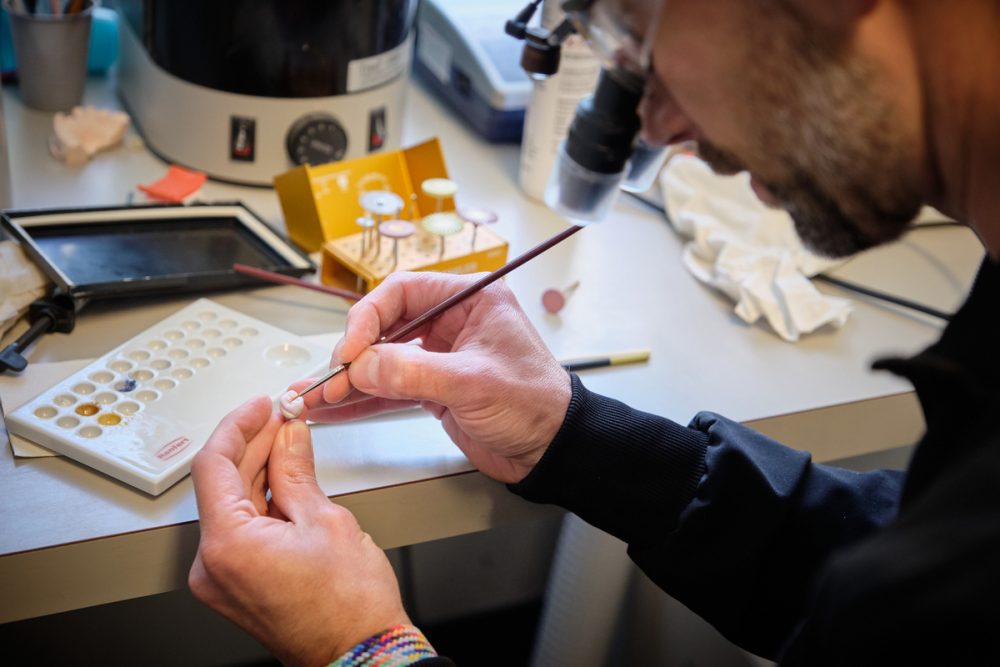
What Causes Jaw Muscle Pain
May 22, 2023
Can I Get Invisalign If I Grind My Teeth?
June 30, 2023Key Takeaways:
Fillings for Minor Decay:
Fillings are ideal for small cavities and less invasive, requiring less tooth removal than crowns.
Crowns for Extensive Damage:
Crowns are better for significantly damaged teeth, offering support and protection when there are large cavities, cracks, or fractures.
Aesthetic Benefits:
Crowns can also improve the appearance of discolored or misshapen teeth, making them a good choice for cosmetic restoration.
You should schedule an appointment with your dentist if you have a sore tooth or cavity. If it turns out you have a cavity or tooth decay, your dentist may restore the tooth and end your pain using a filling or crown.
Sometimes patients have questions about when crowns vs. filling are the best option. We hope to clarify that in this article. We believe an informed patient is an empowered one when it comes to making well-thought-out choices for yourself and your family. This article isn’t a substitute for personal dental care.
First, you must understand the difference between a filling and a crown. A filling consists of a substance that fills in holes in the tooth, replacing part of the damaged tooth. A crown is a prosthetic that is affixed to the tooth and replaces the outer shell of the tooth, providing structure, protection, and an attractive exterior.
When is a filling most appropriate?
If you have a small cavity, chances are a filling is your best option. The tooth decay hasn’t yet significantly damaged the tooth structure. Fillings are less expensive than crowns and less invasive, requiring less removal of the tooth’s enamel.
During the process of getting a filling, your dentist removes the decay, then fills in and seals the unwanted opening. Harmful bacteria can enter the cavity without a filling, causing pain, irritation, inflammation, and further decay.
You usually only need to see your dentist once to get a filling. A filling is a more straightforward treatment and doesn’t require any pre planning. If you see your dentist twice a year as recommended, chances are you will need a filling since the earlier you get treated, the less extensive the damage. That’s why a filling is often considered “routine dental care.” It fixes minor damage and prevents more serious damage from happening.
Sometimes people who need fillings feel self-conscious about the idea of having noticeable gold or silver fillings. Fortunately, you don’t need to worry about that or let that interfere with your oral health. Modern composite fillings are tooth colored and barely noticeable.
Ignoring the pain in the tooth backfires. If you have tooth decay, the only way to stop it is for your dentist to remove the decayed material and somehow restore the tooth, whether that is with a filling or a crown varies, depending on how much decay there is. If there are cracks in the tooth, a filling isn’t the ideal solution. Crowns are better for protecting a tooth with cracks or fractures from further damage and decay.
When a filling isn’t enough, you may need a crown.
A crown may be your best option when the tooth is extensively damaged. There may be large cavities, or the tooth is fragile due to multiple cracks or fractures. Crowns provide both support and protection for the tooth. Sometimes, crowns are also referred to as “caps” since they wrap around or encapsulate the tooth.
Your needs might change over time. If you had a filling that fell out, that may be a sign of additional decay. Retreatment may be a new filling, or if the damage is too much, this retreatment may require a crown instead of a new filling.
Also, sometimes you may need a crown after a treatment like a root canal though this varies based on how strong the tooth is after the treatment and where in the mouth the tooth is located.
Finally, since the crown is tooth-colored, it may also be a good option for aesthetic or cosmetic reasons. For example, if the tooth is deeply discolored or has an unattractive shape, you may prefer a crown. A crown is also a great option to fix both the appearance and function of a broken tooth, whether the break is from trauma or chronic tooth grinding.
Crowns tend to be more expensive since the process is more involved. You may need to see your dentist more than once, however, Southview Dentistry offers same-day crowns. One of the first steps to getting a crown is for your dentist to take images of your tooth which will be used for the fabrication of your crown. Many dental practices need to order a crown, then you come in again for the treatment and to have the crown placed. In the meantime, you may receive a temporary crown to protect the tooth.
Fortunately, our CEREC system allows us to streamline the process of fitting and making a crown. We take accurate three-dimensional images in-office and send the information to our milling machine, which makes a custom crown within minutes. Not all dentists can offer same-day crown service, but we proudly do when possible.
Next Step: See Your Dentist
If you feel pain, it is crucial that you schedule an appointment with your dentist. Cavities and tooth decay simply don’t get better on their own in the way that a cold or flu virus might. If left untreated, the decay gets deeper over time, damaging more and more of the tooth. It starts small, where a filling is perfectly adequate. But as it progresses, you may need more intervention like a root canal, crown, or even dental extraction if the decay is left to its own devices.
Seeing your dentist results in less pain and less expense quickly. Nobody should have to live with dental pain! The earlier you get your cavities treated, the longer your teeth will last and the better you will feel.
Your dentist will help you choose the best restoration option. The decision is based on so many factors, like the damage your tooth has already endured. A skilled dentist should be able to evaluate it and suggest an option that may be best for your needs.
If you live in Charlotte, NC, and need a dentist who can treat your tooth, contact us at Southview Dentistry.
We feel privileged to offer a range of preventative oral health services. These include “routine dentistry,” like fillings or crowns, and cosmetic dentistry to help you live your best smile.
Contact us today to schedule your appointment.




